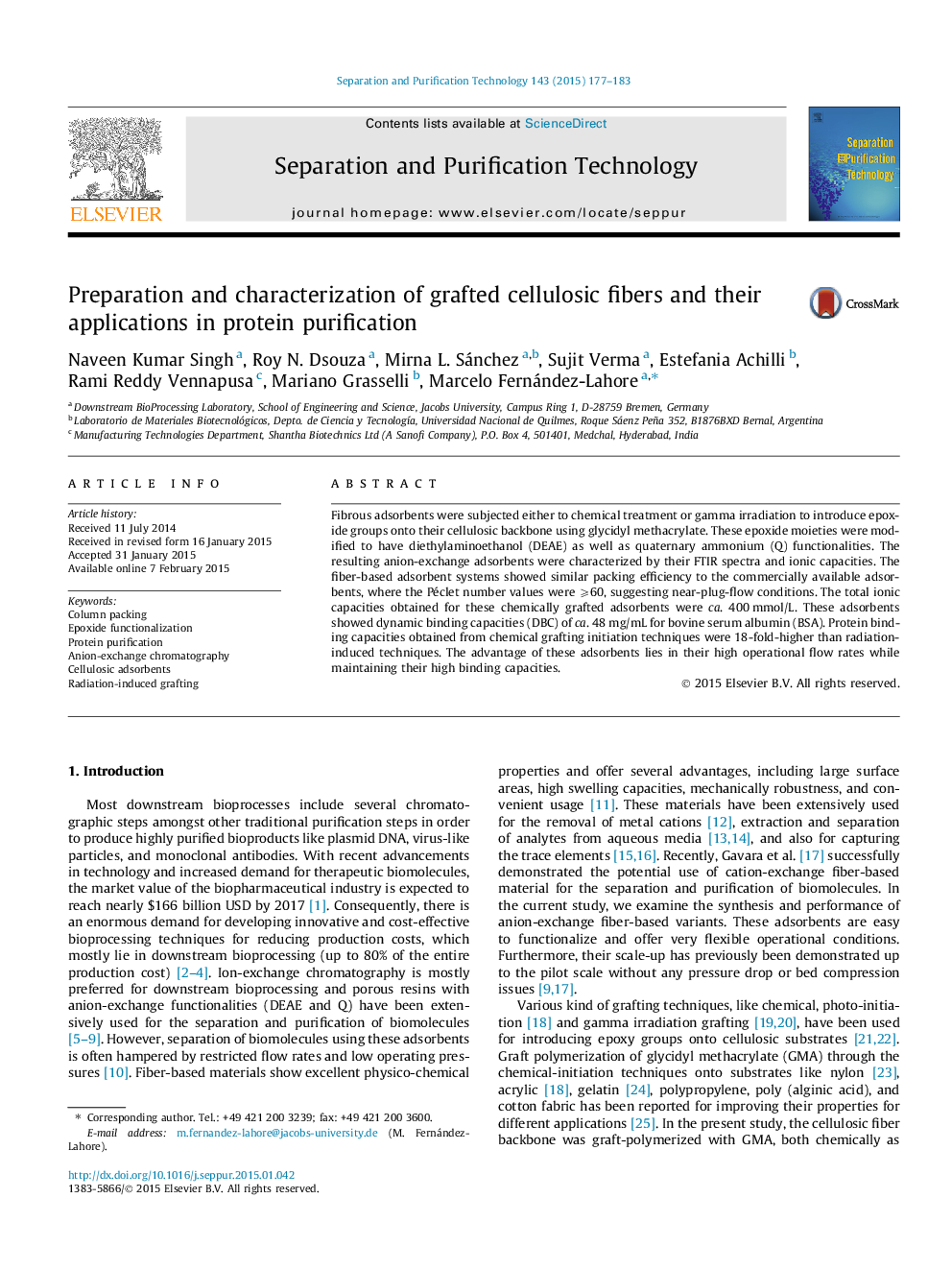| Article ID | Journal | Published Year | Pages | File Type |
|---|---|---|---|---|
| 640554 | Separation and Purification Technology | 2015 | 7 Pages |
•Anion-exchange fibrous adsorbents have BSA binding ability of up to 48 mg/mL.•Fibers are grafted with radical polymerization of glycidyl methacrylate monomers.•Higher binding capacities for chemical grafting over radiation-induced grafting.•Various ligand densities achieved by varying the initiator concentration.
Fibrous adsorbents were subjected either to chemical treatment or gamma irradiation to introduce epoxide groups onto their cellulosic backbone using glycidyl methacrylate. These epoxide moieties were modified to have diethylaminoethanol (DEAE) as well as quaternary ammonium (Q) functionalities. The resulting anion-exchange adsorbents were characterized by their FTIR spectra and ionic capacities. The fiber-based adsorbent systems showed similar packing efficiency to the commercially available adsorbents, where the Péclet number values were ⩾60, suggesting near-plug-flow conditions. The total ionic capacities obtained for these chemically grafted adsorbents were ca. 400 mmol/L. These adsorbents showed dynamic binding capacities (DBC) of ca. 48 mg/mL for bovine serum albumin (BSA). Protein binding capacities obtained from chemical grafting initiation techniques were 18-fold-higher than radiation-induced techniques. The advantage of these adsorbents lies in their high operational flow rates while maintaining their high binding capacities.
